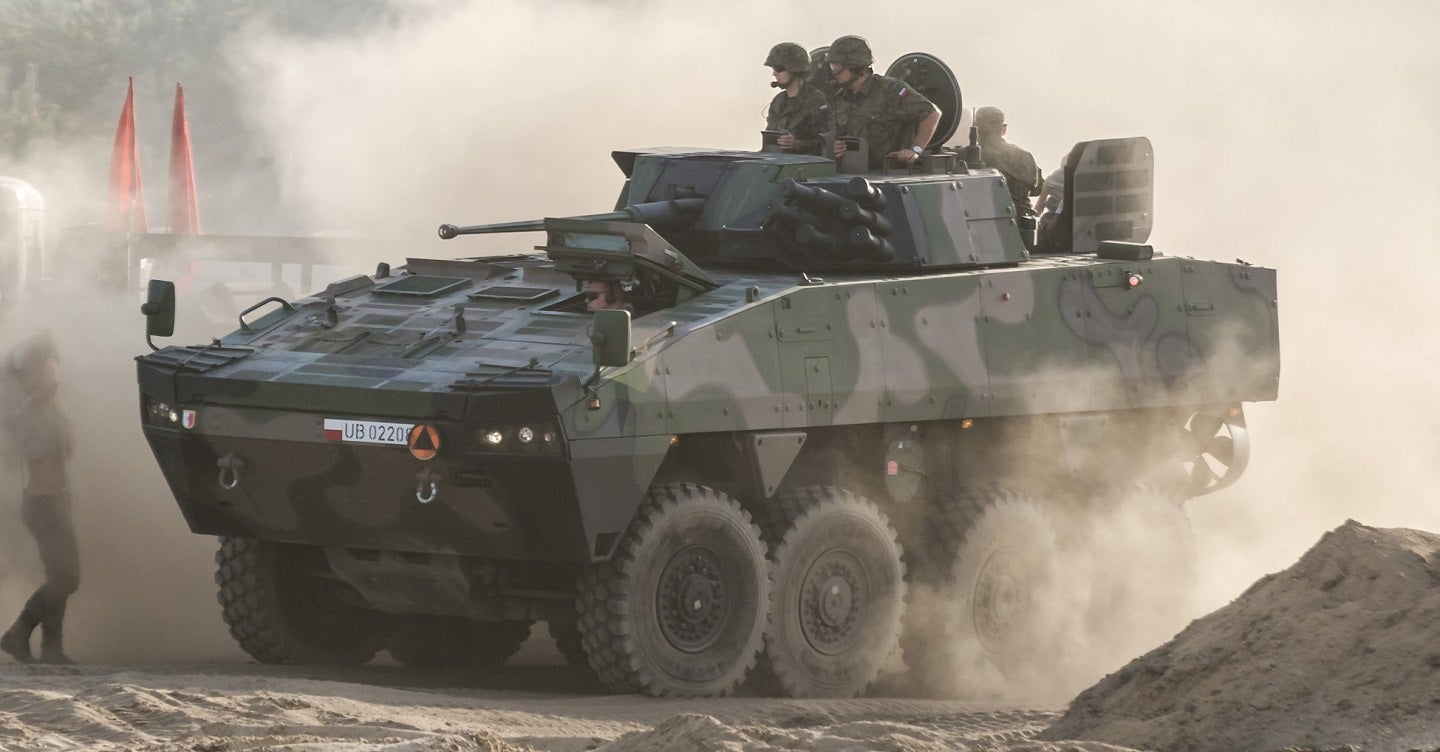
The Polish Armaments Agency has acquired a wide range of military land vehicles under three contracts with companies that are part of the country’s military consortium Polska Grupa Zbrojeniowa (PGZ) on 14 August 2023.
PGZ company Rosomak has agreed to supply 400 Light Reconnaissance Vehicles in a 4×4 chassis for the Polish Armed Forces. This first contract will cost 1.2bn zlotys ($292.9m) and scheduled for delivery between 2024-2030.
The second framework contract will see Huta Stalowa Wola deliver several hundred heavy Infantry Fighting Vehicles (IFVs) in various configurations, including the use of the domestic ZSSW unmanned turret. In addition to the vehicles themselves, the supplier will also provide logistics and training equipment. The basis for the work will be the well-known Krab chassis, while the details of the configuration are yet to be agreed.
Another framework contract signed by PGZ concerns development works on a new Wheeled Armoured Personnel Carrier (NKTO) with a Remotely Controlled Armament Module (ZSMU). In the event of a positive completion of the development works, the contract offers an optional order for nearly a thousand NKTO units equipped with ZSMU in the years 2028-2035.
Modernising military vehicles
The Armament Agency’s order for these land systems comes under the Central European country’s attempt to modernise its systems and to incentivise the growth of its indigenous defence industrial base.
GlobalData intelligence tells us that in view of a large conventional land war on its borders, the Polish Armed Forces are undergoing an extensive modernisation programme at both pace and scale – a process that began slowly in 2011 to shed Soviet-era equipment but accelerated after the invasion.
Replacing main battle tanks, tube and rocket artillery, IFVs, new rotary and fixed-wing aircraft, and next-generation submarines and frigates are all major acquisitions for the forecast period – where spending from 2024–28 is predicted to total $135.8bn, or a compound annual growth rate of 10.8%. The biggest single year-on-year increase came from 2022-2023, where spending increased by $7.2bn, or 55.7%.
According to Poland’s Equipment List, almost all of its domestically manufactured land systems are obsolete. 260 BRDM-2 IFVs (procured between 1969-76); 1123 BMP-1 IFVs (1973-80); 15 MT-LB armoured personnel carriers (1990s); among other systems procured until the 2010s.
Buy locally, export globally
GlobalData Aerospace and Defence Analyst James Marques points out that the latest land system procurement “ties into Poland’s longer-term goal to become a major strategic centre for Nato as a whole.
“Poland is massively expanding their military but also hosting a lot of troops from other countries, and they also want to become a big supply chain hub for many Nato vehicles.”
In June, Poland purchased a $19m distributed interactive simulation-based systems integration laboratory from the US Department of Defense (DoD). The laboratory consolidates the country’s expanding defence programme; it will enable Poland to establish closer military ties with the US and Nato partners with the testing of new standard system components.
Likewise, another Polish general succeeded to the role of the deputy commanding officer of the ‘V Corps’, part of the US Army in western Poland, where the responsibilities General Maciej Jabloński predominantly encompass situational awareness of the US forces on the eastern flank. Also, with regards to the Polish Armed Forces, they also include introducing Abrams tanks into Polish service.
“It would be surprising if [Poland] didn’t eventually make a big export effort for some of these domestically designed vehicles in Europe in a few years after establishing comfortable production,” Marques added.
President of the PGZ Sebastian Chwałek reflected this, saying: “Thanks to the new orders placed by the Ministry of Defense for the Polish industry, we are part of the process of strengthening the defence potential of the Republic of Poland.”
“We have extensive experience in developing projects from scratch and all the competence to efficiently create new combat platforms and expand the Group’s product portfolio,” Chwałek added in a bid to market Polish military systems.




